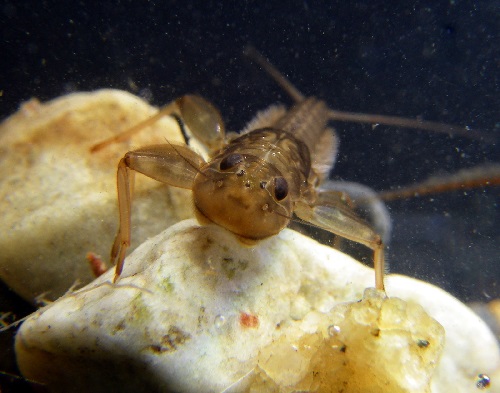
The Herbst lab offers technical expertise and a full range of bioassessment services. We have a long record of providing careful and complete studies, reports, and technical services to guide management and inform decision makers about aquatic resources. Please get in touch with us to discuss how we might help you.
Services we provide:
- Stream surveys of benthic macroinvertebrates, physical habitat, water chemistry, and algae following standard guidelines of SWAMP (California Surface Water Ambient Monitoring Program) and compilation of data into standardized reporting format for water quality assessments.
- Development of monitoring programs and sampling designs such as:
- Documenting status and identifying trends in aquatic ecosystem alteration as part of climate change assessment.
- Monitoring stream, lake, spring, meadow, and wetland restoration success.
- Measuring and identifying stressor effects on aquatic organisms, communities, and ecosystems across gradients of stress.
- Inventories of aquatic invertebrates from stream, lake, spring, and wetland surveys. Identifications made to genus and species levels. Indicators of biological integrity and ecological health provided for whole community or individual taxa. Field surveys, sampling, laboratory processing, and analysis included.
- Physiological bioassays of the lethal and sub-lethal effects of salinity and water-borne pollutants on the viability of invertebrates and algae.
- Inventory of road hydrologic connectivity to streams to evaluate erosion hazards and sources of sedimentation to streams.
- Water quality: pH, specific conductivity, alkalinity, acid neutralizing capacity, nutrients (N, P, Si), turbidity, salinity, chlorophyll, organic matter (fine, coarse, dissolved fractions).
- Data management (archival, organization, analysis).
- Instrumentation set-up and maintenance on streams (e.g. stage-level pressure transducers, temperature probes, weather stations).
- Geographic Information Systems analysis
Examples of services to agencies and collaborations
National Park Service
- Biodiversity of stream invertebrate communities in relationship to the presence or absence of exotic trout introduced in Yosemite NP (2000-2002) [funded by The Nature Conservancy]
- Influence of flow diversions on the viability of endemic aquatic invertebrate populations in thermal spring systems in Death Valley NP (1998-2002)
- Invertebrate community ecology of Devils Hole spring pool, Death Valley NP (1998-2002)
- Restoration of high-elevation stream communities in Sequoia and Kings Canyon National Park following removal of exotic trout (2003-2007; 2011-ongoing)
U.S. Forest Service, Region 5
- sentinal stream monitoring network for detecting climate change effects in the Sierra Nevada (covering 24 streams across the entire Sierra, on USFS and NPS lands) (2010-ongoing)
U.S. Forest Service; Inyo, Toiyabe-Humboldt NF, and Pacific-SW Research Station
- Bagley Valley stream restoration monitoring (pre- / post- channel reconfiguration, 1999-2002)
- West Walker River livestock grazing management monitoring (1999-2004)
- Kings River experimental watershed evaluation of timber harvest practices through aquatic invertebrate monitoring (1999-ongoing) [Co-investigators Scott Cooper & Carolyn Hunsaker]
U.S. Fish and Wildlife Service
- Aquatic habitat inventories; invertebrate biogeography on National Wildlife Refuges in Nevada: Moapa NWR, Ruby Lake NWR, Sheldon NWR; Ash Meadows NWR and Owens Valley (1996-2002, ongoing) [Co-investigator Don Sada]
- Changing ecosystem of Walker Lake, Nevada, in response to declining lake level and rising salinities – aquatic invertebrate population dynamics and physiology (2008-ongoing)
- Restoration of springs by exclosure fencing on the Sheldon Wildlife Refuge (2008-ongoing)
U.S. Environmental Protection Agency
- Evaluation of the cumulative impacts of livestock grazing on stream ecosystems (1996-1999)
- Biomonitoring of recovery and remediation of acid mine drainage, Leviathan Mine Superfund site (Alpine Co., CA). (1995-ongoing)
California State Water Resources Control Board and Regional Water Quality Control Boards (Lahontan and Coast)
- Development of biological criteria for stream water quality standards (1999-2011)
- Identification of biological water quality targets for sedimentation in Squaw Creek (guidance for TMDL, 2000-2002)
- Setting a biological restoration baseline for the Upper Truckee River (1999-2002)
- Identification of biological water quality targets for streams exposed to sediment loads from land surface disturbance erosion in the Sierra Nevada and Central Coast (2006-2011)
Great Basin Unified Air Pollution Control District
- Survey of aquatic environments and evaluation of the potential for restoration of aquatic habitat on the dry playa of Owens Lake (1995-ongoing)
Tahoe Regional Planning Agency
- Meta-analysis of bioassessment data from Lake Tahoe Basin for evaluation of local reach-scale and watershed-scale effects of disturbance on stream biological integrity (2004-2006)
California Department of Fish and Wildlife
- Sediment impacts on the East Walker River (1992)
- Livestock grazing impacts and recovery in the Golden Trout Wilderness (2004-2006)
- Habitat suitability for exotic trout removal (Cottonwood Lakes) (2009)
City of South Lake Tahoe
- Restoration monitoring of Trout Creek erosion control and channel restoration (1999-2007)
Bureau of Land Management
- Evaluation of OHV disturbance and aquatic habitat inventory of Surprise Canyon, Panamint Mountains (CA) (2003-2005)
- Biomonitoring in the Bodie Hills, and eastern Sierra, CA (2008-2010)
Truckee River Watershed Council
- Biomonitoring of sediment effects in the Middle Truckee River (2010-ongoing)

 David B. Herbst |
David B. Herbst |